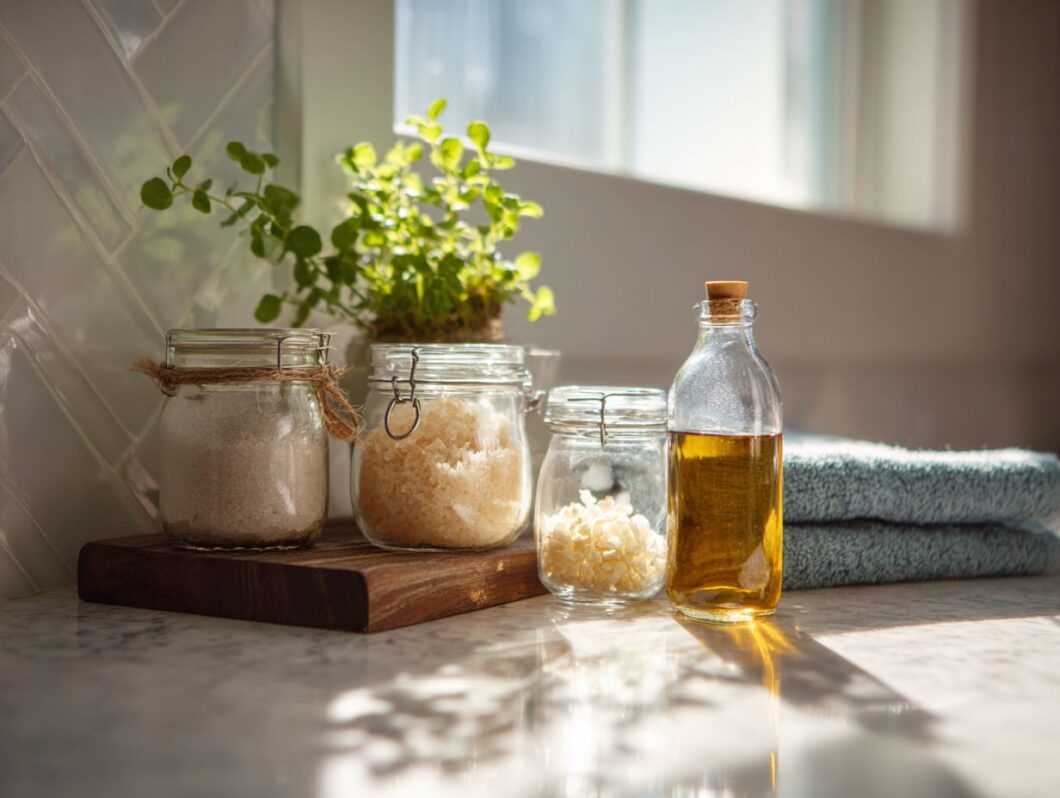Detoxing my beauty routine transformed my approach to self-care, revealing the hidden impact of everyday beauty products on my health, emphasizing the importance of clean living. With increasing awareness of harmful ingredients and the beauty industry’s challenges, I realized that a clean beauty regimen isn’t just a trend-it’s essential for my well-being and holistic health. In this guide, I’ll share the seven straightforward steps I took, from assessing my current products to embracing DIY solutions, all designed to refresh your routine and enhance your natural radiance. Let’s dive into this essential journey together.
Step 1: Assess Your Current Beauty Products and Ingredients List
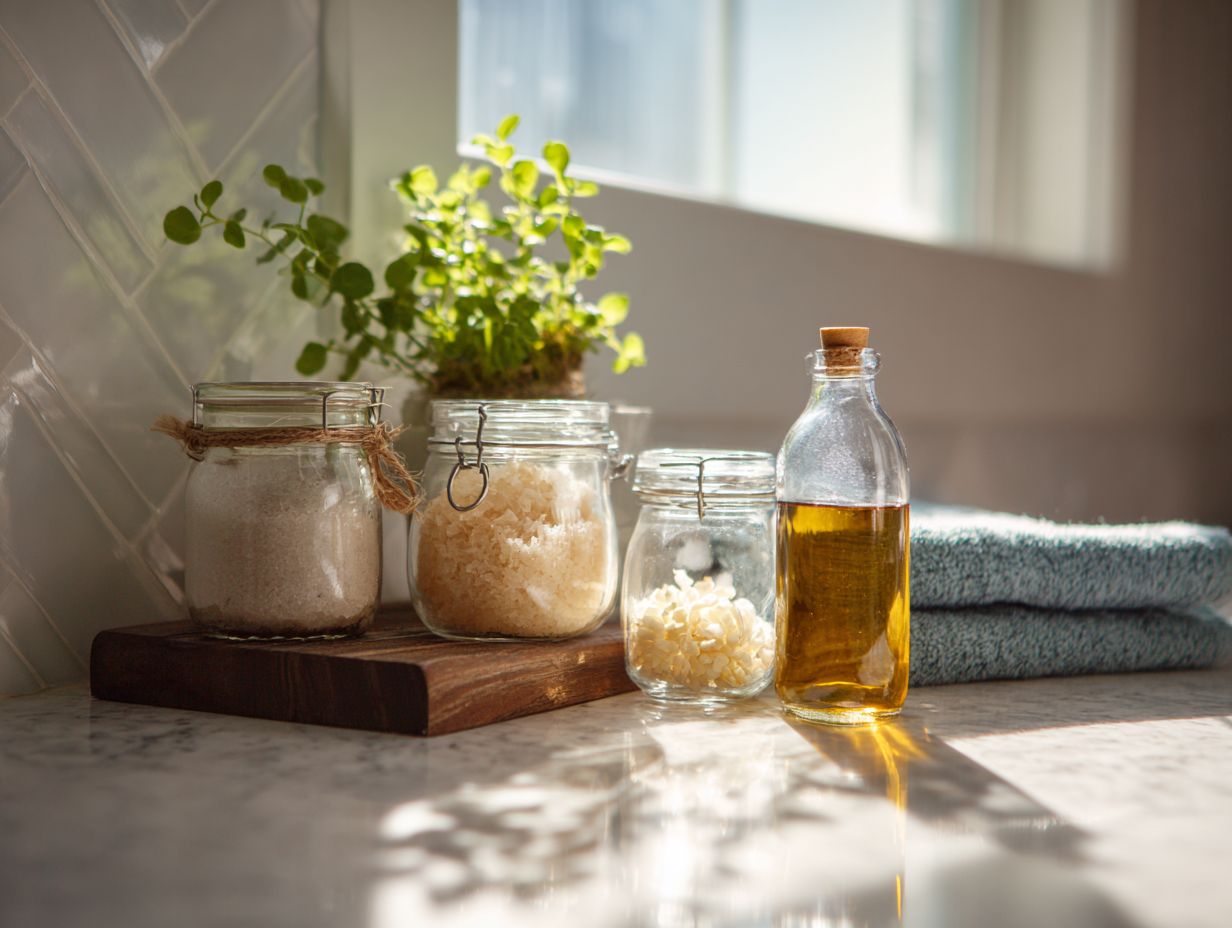
I initiate my detox journey by thoroughly evaluating my current beauty products to identify any harmful ingredients and eliminate unnecessary items.
Identify Harmful Ingredients
I utilize tools like the Environmental Working Group’s Skin Deep database to identify harmful ingredients in my beauty products, such as parabens, sulfates, and phthalates.
To effectively use the EWG Skin Deep database, I start by visiting their website and entering the name of my product in the search bar. Once I locate the product, I can see a score that reflects its safety, along with a detailed breakdown of individual ingredients.
I pay close attention to common harmful ingredients, including:
- Parabens: Linked to hormonal disruptions.
- Phthalates: Associated with reproductive issues.
- Formaldehyde: A known carcinogen.
By identifying these ingredients in my products, I can make informed choices about what I apply to my skin.
Evaluate Product Purpose: Embracing Minimalism
I regularly review each product’s purpose by asking whether it addresses a specific skin need or if it’s merely a luxury item that I can do without. To make informed evaluations, I categorize products based on their functions.
Essential products, such as a quality moisturizer and sunscreen, are vital for maintaining skin health and preventing damage. On the other hand, non-essential items, like extravagant masks or high-end serums, may provide only temporary benefits.
I assess how frequently I use each product; if it’s part of my daily routine, it’s likely essential.
Affordability is also a key consideration for me; I prioritize budget-friendly essentials over luxury items. I maintain a product inventory to track effectiveness, which helps clarify what genuinely benefits my skin compared to what is simply indulgent.
Step 2: Research Clean Alternatives
Once I identify harmful products, I conduct thorough research to find clean alternatives that align with my skin’s specific needs and adhere to the principles of clean beauty.
Understanding Clean Beauty Standards and Effective Skincare Ingredients
I prioritize clean beauty standards that focus on non-toxic, eco-friendly ingredients, consciously avoiding chemicals like sulfates, parabens, and artificial fragrances in favor of natural options derived from essential oils.
Organizations such as the Environmental Working Group (EWG) play a crucial role in assessing product safety and environmental impact. I recommend selecting products with a low EWG rating, which indicates a reduced presence of harmful ingredients.
For example, brands like Beauty Counter and 100% Pure exclusively utilize plant-based formulas, ensuring transparency in their sourcing practices.
To seamlessly incorporate clean beauty into my routine, I begin by replacing my most frequently used products-such as foundation or moisturizer-with EWG-verified alternatives. This not only enhances my beauty regimen but also contributes to a healthier planet.
Popular Clean Brands to Consider for Sustainable Products
I consider brands such as Ilia Beauty, RMS Beauty, and Herbivore Botanicals to be exemplary in their commitment to clean ingredients and sustainable practices. Additionally, Alima Pure stands out for its focus on minimalistic formulas that are free from harmful additives, while Tata Harper is renowned for using 100% natural ingredients sourced directly from its own farm.
100% Pure takes pride in utilizing fruit pigments for color, completely avoiding synthetic dyes. Beautycounter is another brand that emphasizes transparency in ingredient sourcing and advocates for stricter regulations within the beauty industry.
Each of these brands not only promotes clean beauty but also implements environmentally responsible practices, making them reliable choices for conscious consumers.
Step 3: Gradually Replace Products
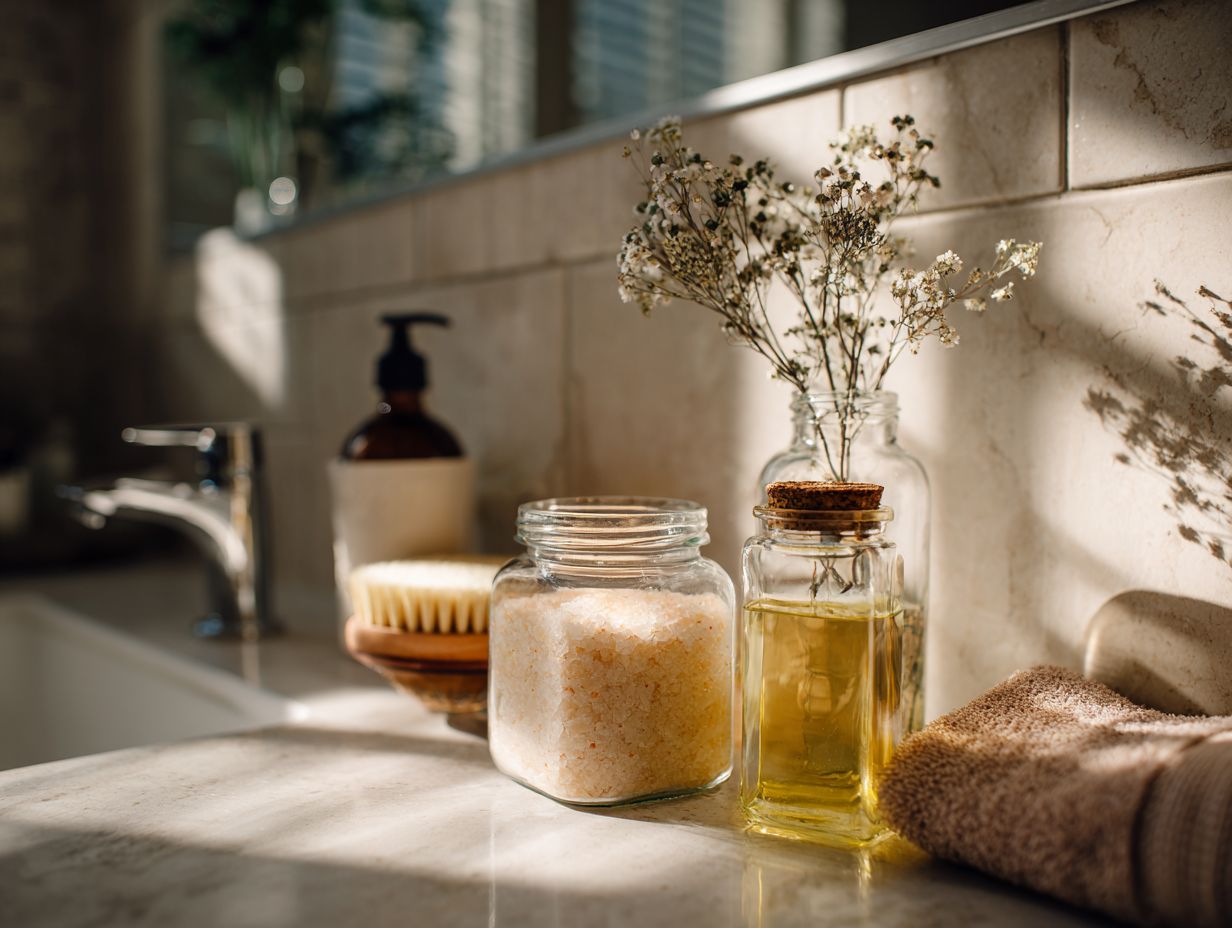
I recommend transitioning to clean beauty products gradually to prevent overwhelming both my skin and budget.
This approach allows me to take the time necessary to determine which products work best for my individual needs.
Prioritizing High-Use Items
I begin by replacing my most-used items, such as foundation and moisturizer, as these have the greatest impact on my skin health.
Next, I evaluate my cleanser and sunscreen, both of which play essential roles in protecting and nourishing my skin.
I prefer brands like RMS Beauty or Ilia for foundation and moisturizer, as they utilize clean ingredients while delivering excellent coverage. For cleansers, I choose options from brands like BeautyCounter, which are free of harmful chemicals.
I also switch to mineral-based sunscreens, such as Blue Lizard, which provide protection without irritating sensitive skin. By prioritizing these products, I can significantly enhance my skincare routine and overall well-being.
Tips for Transitioning: Achieving Balance and Simplicity
I recommend implementing these strategies for a smooth transition in your skincare routine: introduce one new product at a time, closely monitor your skin’s reactions, and maintain a beauty journal.
To start, I suggest incorporating a gentle cleanser to prevent overwhelming your skin. After a week, I assess how my skin feels and note any irritation or improvements in my journal.
Next, I consider adding a moisturizer that is specifically tailored to my skin type. If my skin responds positively, I then proceed to test serums or treatments, alternating them every two weeks.
It is essential to prioritize products with fewer active ingredients to maintain balance. Additionally, I track environmental changes, such as shifts in weather and stress levels, as these factors can significantly influence my skin’s health during this transition.
Step 4: Simplify Your Routine
I find that a simplified beauty routine can significantly enhance my skincare results while also minimizing the clutter of unnecessary products.
Essential vs. Non-Essential Products
I focus on the essentials in my skincare routine, prioritizing moisturizer, sunscreen, and a gentle cleanser while considering the elimination of excess serums and toners that do not serve a specific purpose.
For optimal skin health, I prioritize using a lightweight moisturizer to maintain hydration and a broad-spectrum sunscreen with an SPF of at least 30 to protect against UV damage. A gentle cleanser, ideally a cream or oil-based product, effectively removes impurities without stripping the skin of moisture.
I critically evaluate my routine; if a serum does not address a particular concern such as acne or aging, I find it may be unnecessary. Additionally, utilizing tools like a skin analysis app can help identify my skin’s true needs, guiding me toward simple yet impactful choices.
Step 5: Embrace DIY Beauty Solutions
I find that DIY beauty solutions provide a personalized approach to my skincare routine and beauty philosophy, allowing me to incorporate clean, natural ingredients effectively.
Simple Recipes for Skincare
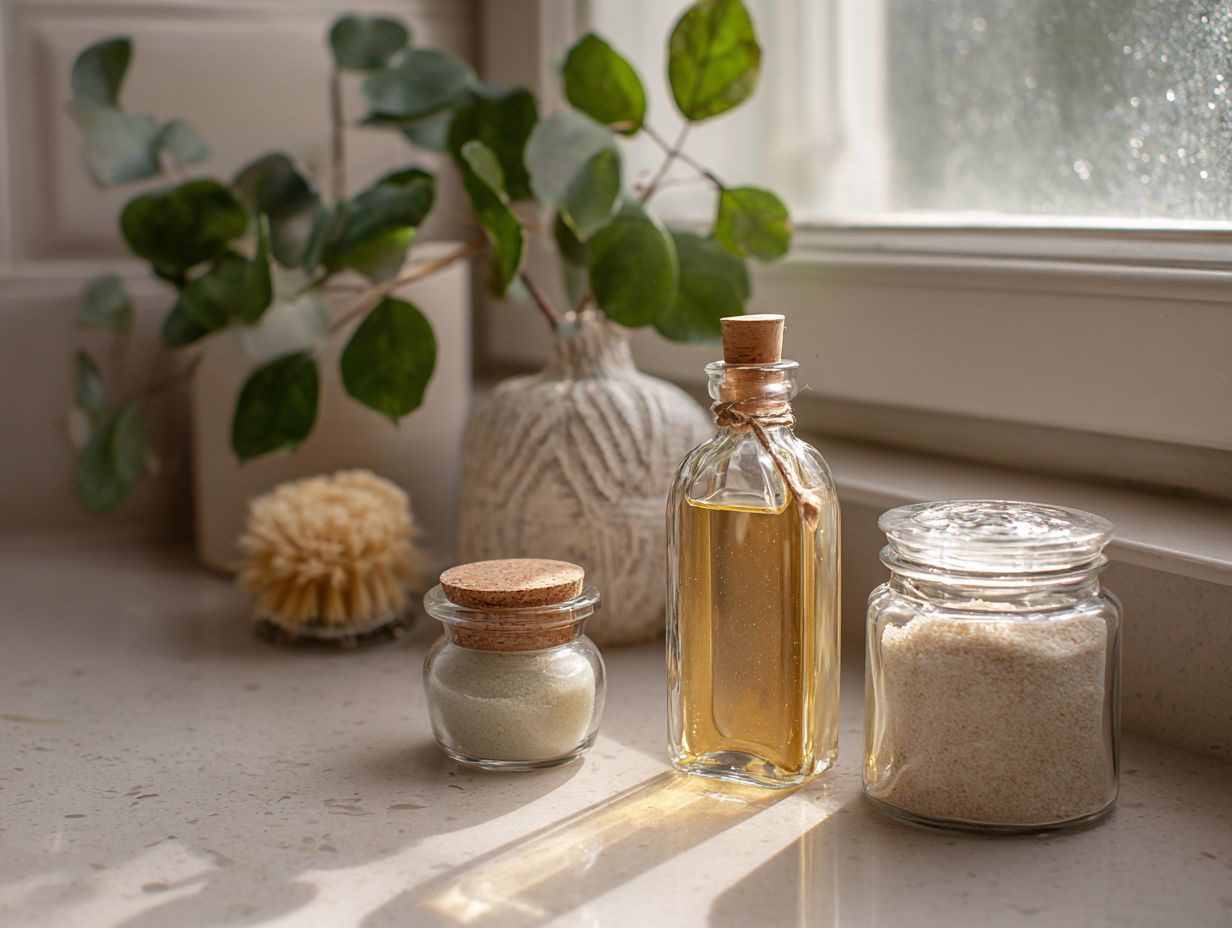
I recommend trying these straightforward recipes: a hydrating avocado mask and a soothing oatmeal scrub, both crafted from easily accessible ingredients.
For the hydrating avocado mask, I simply mash half a ripe avocado with a tablespoon of honey and a splash of olive oil. After applying it to my face for 15-20 minutes, I rinse it off with warm water, and I find that it deeply nourishes my dry skin.
For the soothing oatmeal scrub, I mix one cup of finely ground oats with a tablespoon of honey and just enough warm water to create a paste. I gently massage this onto my face in circular motions and rinse it off after 10 minutes. This process effectively exfoliates and calms any irritated skin.
Both of these recipes are cost-effective and maximize the beauty benefits for my skin while utilizing natural ingredients and promoting rejuvenation.
Step 6: Monitor Your Skin’s Response
I find it essential to monitor my skin’s response closely to ensure that the detox process is producing positive results and not leading to any irritation.
Signs of Improvement
I actively look for signs of improvement, such as increased hydration, reduced breakouts, and an enhanced overall skin tone, as indicators of a successful detox. To effectively track these changes, I maintain a skincare journal where I document my daily routine, any products used, and how my skin reacts.
For example, if I switch to a gentler cleanser, I make sure to note any changes within a week. I find that using apps like Evernote or Notion allows me to easily log my thoughts and photos.
I also pay attention to patterns over time: Are certain products more effective? Do specific ingredients cause irritation? This systematic approach helps me refine my routine, ensuring that my detox is genuinely beneficial.
Step 7: Maintain Your Detoxed Routine
Maintaining my detoxed routine is crucial for ensuring long-term skin health, embracing wellness trends, and minimizing future exposure to harmful ingredients.
Regularly Reviewing Products: Embracing Mindfulness and Conscious Consumerism
I make it a priority to set a reminder to review my skincare products every 3-6 months to adjust my routine according to seasonal changes and evolving skin needs.
To begin my review, I create a checklist that includes the expiration dates of each product, as many can lose effectiveness after a certain period. I also assess the ingredient labels for any updates or changes that may impact my skin type. Checking the product labels is crucial for ensuring the products are natural beauty products.
Additionally, I track my personal effectiveness by noting any changes in my skin’s condition after using each product. Incorporating beauty tips from beauty influencers helps me stay updated with the latest trends.
Utilizing tools like Google Keep or Trello allows me to organize this checklist and set reminders, ensuring I efficiently stay on top of my skincare routine, including moisturizing and exfoliation steps.
Frequently Asked Questions
What does it mean to “detox” your beauty routine?
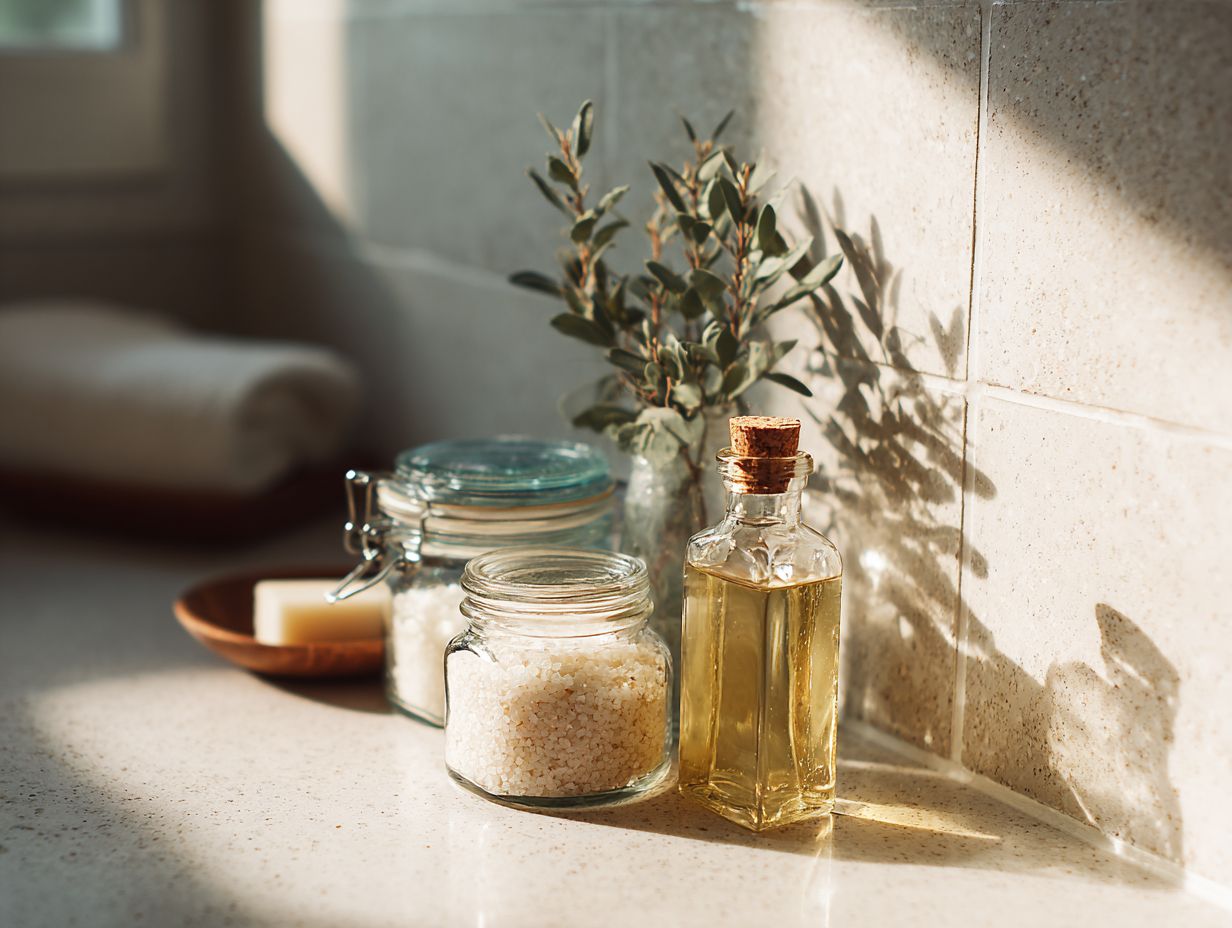
Detoxing your beauty routine means eliminating harmful or toxic ingredients from your skincare and makeup products and replacing them with natural, non-toxic alternatives. This helps to reduce your exposure to potentially harmful chemicals and improve your overall health and well-being. It’s a transformative process that can lead to radiant skin.
Why is it important to detox your beauty routine?
Many conventional beauty products contain ingredients like parabens, phthalates, and artificial fragrances that have been linked to health issues such as hormone disruption and skin irritation. Detoxing your beauty routine can help to minimize your exposure to these harmful chemicals and improve the health of your skin. It’s essential for adopting a toxin-free and eco-conscious lifestyle.
How can I start detoxing my beauty routine?
You can start detoxing your beauty routine by taking a closer look at the ingredients in your skincare and makeup products. Look for natural and non-toxic options and gradually replace your current products with them. You can also try making your own DIY beauty products using simple, natural ingredients. Following a step-by-step guide can help ease the transition.
What are some common harmful ingredients to avoid in beauty products?
Some common harmful ingredients to avoid in beauty products include parabens, phthalates, formaldehyde, sulfates, and synthetic fragrances. These ingredients have been linked to various health issues and can be found in many conventional beauty products. Always check the ingredient list before purchasing a product. Opting for products by ethical brands can ensure higher quality and safer alternatives.
Can switching to natural beauty products improve my skin?
Switching to natural beauty products can definitely improve the health and appearance of your skin. Natural ingredients are often gentler and non-irritating, making them suitable for all skin types. They also contain essential vitamins and minerals that can nourish and hydrate your skin, giving you a radiant and healthy complexion. This holistic approach can lead to long-term skin nourishment.
What other benefits can I expect from detoxing my beauty routine?
Plus improving your skin’s health, detoxing your beauty routine can also have other benefits such as reducing your carbon footprint and supporting sustainable and ethical beauty practices. It can also inspire you to make healthier choices in other areas of your life and promote overall well-being. By adopting a wellness routine that includes cruelty-free and chemical-free products, you can achieve long-lasting benefits.


